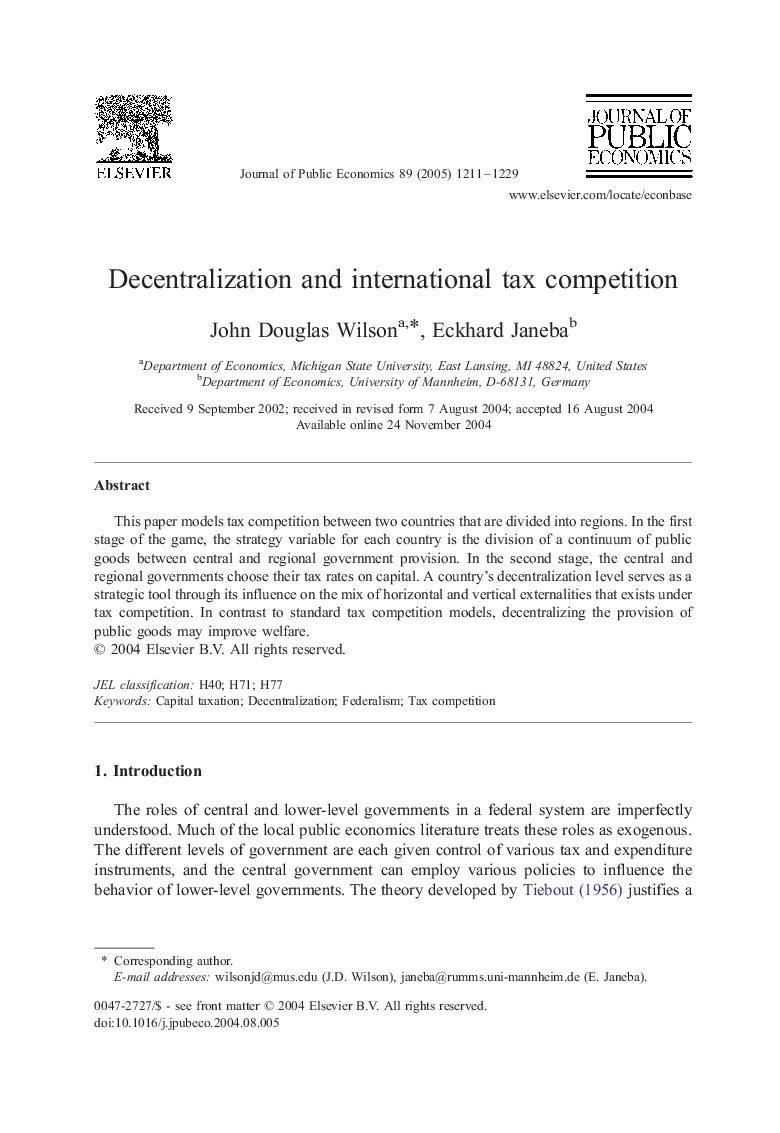| Article ID | Journal | Published Year | Pages | File Type |
|---|---|---|---|---|
| 10479575 | Journal of Public Economics | 2005 | 19 Pages |
Abstract
This paper models tax competition between two countries that are divided into regions. In the first stage of the game, the strategy variable for each country is the division of a continuum of public goods between central and regional government provision. In the second stage, the central and regional governments choose their tax rates on capital. A country's decentralization level serves as a strategic tool through its influence on the mix of horizontal and vertical externalities that exists under tax competition. In contrast to standard tax competition models, decentralizing the provision of public goods may improve welfare.
Related Topics
Social Sciences and Humanities
Economics, Econometrics and Finance
Economics and Econometrics
Authors
John Douglas Wilson, Eckhard Janeba,
